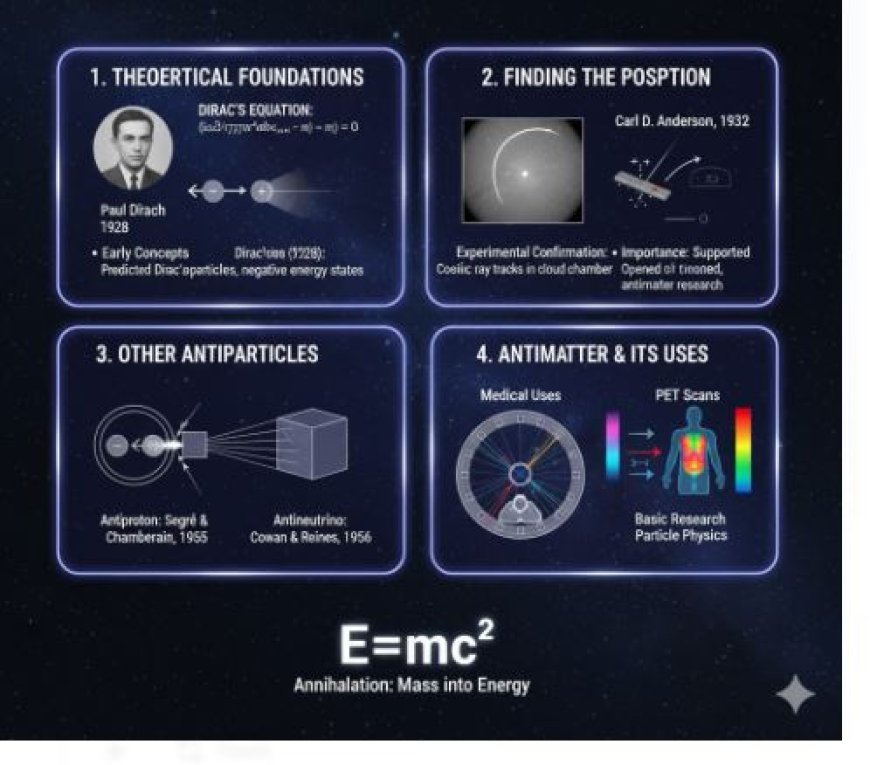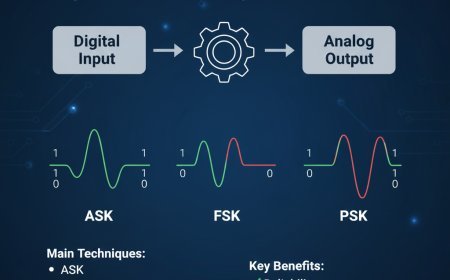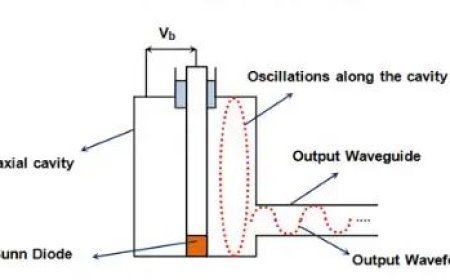The Discovery of Antiparticles
The discovery of antiparticles revolutionized physics by revealing that every particle has an opposite counterpart with the same mass but opposite charge. From Dirac’s theoretical prediction to Anderson’s detection of the positron, this finding deepened our understanding of antimatter, quantum theory, and modern particle physics.

The Discovery of Antiparticles
- Antiparticles are an interesting idea in physics and are key to understanding the world.
Antiparticles
- Antiparticles are partners to the normal particles that form everything we see around us. For each type of particle, there is an antiparticle that has the same mass but the opposite charge.
For example:
- The antiparticle of an electron, which has a negative charge, is called a positron, and it has a positive charge.
- A proton, which has a positive charge, has an antiproton as its antiparticle, and it has a negative charge.
- When a particle and its opposite particle come together, they can destroy each other and create energy. Einstein's well-known equation, E=mc², explains that mass can be changed into energy.
Theoretical Foundations
1. Early Concepts
The concept of antiparticles started in the early 1900s when scientists began studying atomic structures. In 1928, British scientist Paul Dirac created a new theory that linked quantum physics with special relativity. His equations indicated that each particle should have a matching antiparticle.
2. Dirac’s Equation
Dirac's equation suggested that an electron could exist in a state with negative energy. He suggested that what we think of as negative energy states might actually represent real objects called antiparticles. This was a very important idea because it hinted at a new type of matter.
Finding the Positron
1. Experimental Confirmation
In 1932, American physicist Carl D. Anderson proved the presence of the positron. While researching cosmic rays in a cloud cell, Anderson saw trails that showed particles acting like electrons, but with a positive charge. This was the first clear proof of an antiparticle, confirming what Dirac had predicted.
2. Importance of the Discovery
The finding of the positron was important for many reasons:
- Checking Theories: It supported Dirac's ideas, strengthening the basics of quantum physics and proving that particles can have antiparticles.
- Antimatter Research: It created new opportunities for study in particle physics and antimatter, resulting in more breakthroughs.
Other Antiparticles
After finding the positron, scientists found other antimatter particles.
- Antiproton: In 1955, the antiproton was found by Emilio Segrè and Owen Chamberlain at the Radiation Laboratory at the University of California, Berkeley. They made antiprotons by hitting protons together with a lot of energy.
- Antineutrinos: These are the opposite of neutrinos. Neutrinos are neutral particles that barely interact with anything. Antineutrinos were found in 1956 by Clyde Cowan and Frederick Reines.
Antimatter and Its Uses
1. Medical Uses
One of the most fascinating uses of antiparticles is in medical imaging, especially in Positron Emission Tomography (PET) scans. This method involves putting a radioactive material that gives off positrons into the body. When positrons meet electrons, they destroy each other and form gamma rays. These rays can be identified to make images of the body's internal organs.
2. Basic Research
Antimatter is also important for studies in particle physics. Physicists use particle accelerators to study antiparticles and learn more about the basic forces of nature and the differences between matter and antimatter in the world.
What's Your Reaction?



































